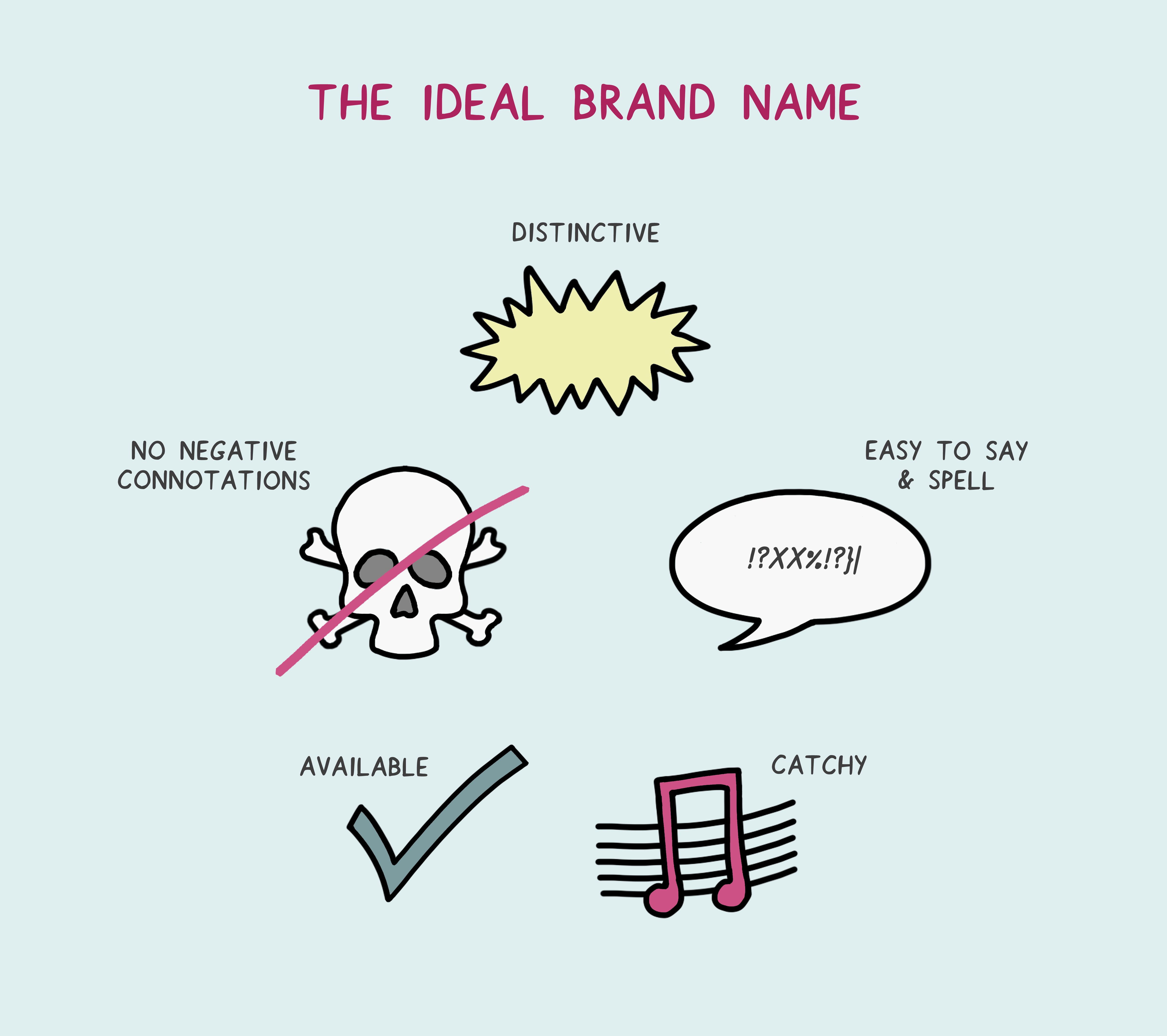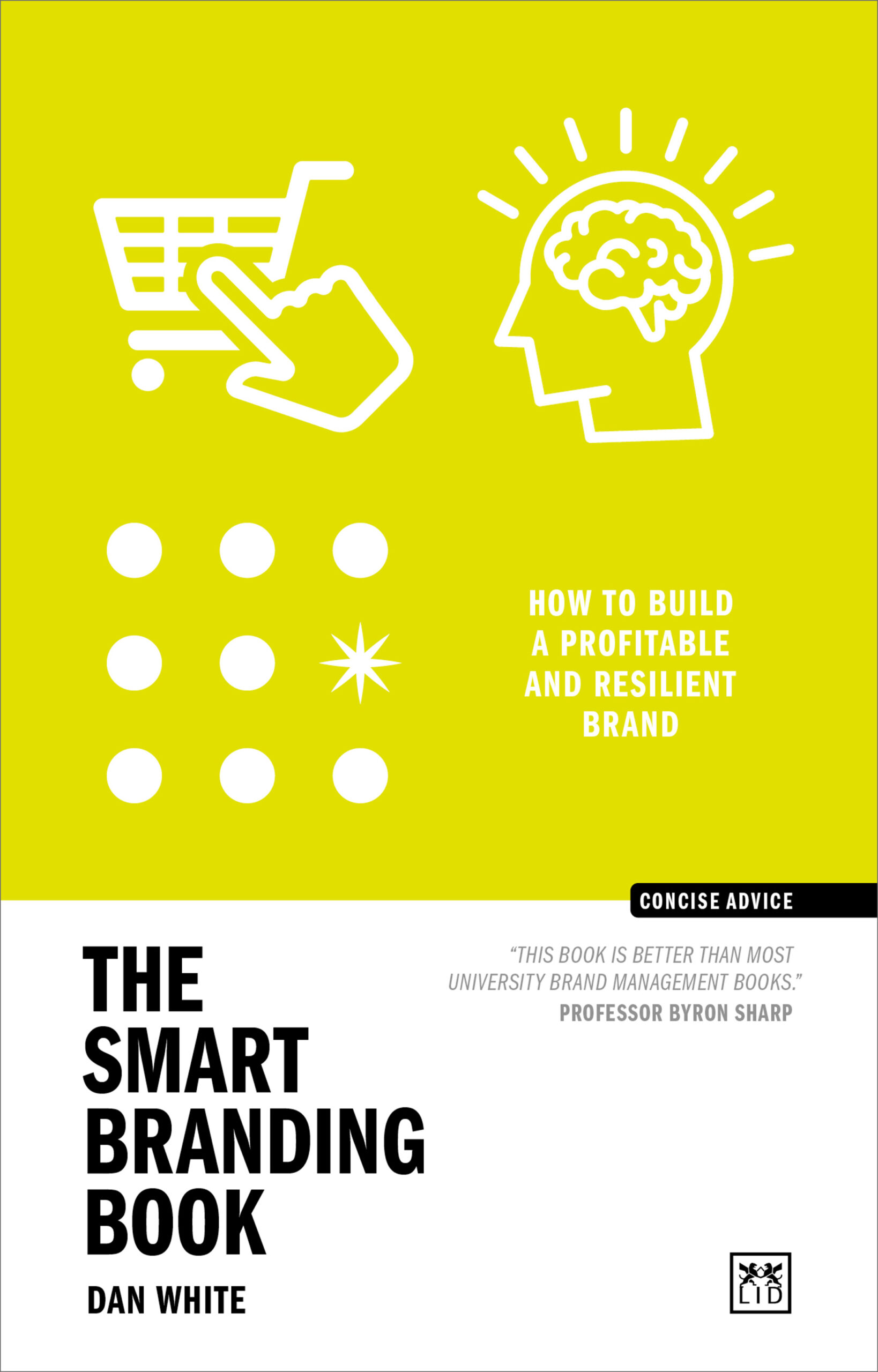|
How to Choose the Right Name for Your Brand? with Dan White
By Guest Contributor Dan White
Author of The Smart Branding Book, Dan White, shares how to choose the best possible name for your brand.
Names are important. Sales of the Patagonian toothfish saw a 30-fold increase in 90 days when it was rebadged Chilean sea bass in the late 1970s. Names shape how people perceive a brand and how easy it is for them to ask for it, search for it and recommend it to others. They also help people to distinguish products from alternatives and remember them. If a brand always delivers good quality, it will build a ‘good name’ for itself – an old phrase for an aspect of branding that will never become outdated.
When choosing a brand name, consider these five characteristics:

DISTINCTIVE
All brands should aim to be as distinctive as possible. Having a brand name that looks and sounds like no other is a major advantage. The Australian furniture polish Mr Sheen has a unique name that has become famous. A ‘Mr Sheen’ character features on its pack and in its advertising, alongside the slogan ‘Mr Sheen shines umpteen things clean.’ Together, these ‘distinctive brand assets’ (see Chapter 3 of The Smart Branding Book by Dan White) have helped make the brand highly salient and fuel its growth.
EASY TO SAY AND SPELL
If a brand name is easy to pronounce and spell, people can ask for it with ease, search for it and tell others about it. The handicap of having an awkward name can be overcome but it is better to avoid the problem in the first place. Realizing this issue, accounting software brand Xero used a voiceover in its advertising asking people to search for “Zero with an X.” Czech beer brand Plzeňský Prazdroj became Pilsner Urquell in other countries to make pronunciation simpler in languages with a more inclusive attitude to vowels.
CATCHY
The article “The Sound of Brands” by researchers at the University of Alberta explains that names with a repetitive sound are more appealing, and this enhances brand preference and choice (Argo, Popa and Smith, 2010). Examples include Kit Kat, TikTok and Dunkin’ Donuts.
AVAILABLE
An obvious consideration when choosing a brand name is whether it can be registered as a trademark in all potential markets. It is also relevant to check whether URLs related to the name are available.
NO NEGATIVE CONNOTATIONS
It makes sense to avoid names with negative associations. Poolife, for example, isn’t an ideal name for a swimming pool maintenance company. International brands should also check what their name might sound like in different languages. Nova, for example, is a stellar name for a car in English-speaking countries, conjuring the concept of newness. In Spanish, however, it means ‘not going.’ Likewise, the name Smeg has connotations in English that are off-putting in a kitchen context.
Brand names can accumulate negative associations over time. For example, the name of the rice brand Uncle Ben’s was changed to Ben’s Original in 2020. Titles such as ‘uncle’ and ‘aunt’ had historically been used in southern US states to refer to black people, instead of the more formal and respectful ‘mister’ or ‘miss.’ Changing social attitudes meant that this was no longer deemed acceptable. At the same time, the stereotyped African American brand character was removed from the packaging.
It is unclear whether it is helpful for a name to convey what the brand is or does, or what differentiates it. Many brand names do give an impression of what the brand is all about. Facebook (formerly FaceMash) started as a website for students to rate fellow students’ attractiveness. Convenience store Tote’m changed its name to 7-Eleven in 1946 to highlight its long opening hours. Groupon (group coupon), Netflix (internet flicks), TiVo (television input, video output) and Microsoft (microcomputer software) are all made-up words designed to convey a vague sense of what the brand does.
Likewise, little is known about the benefit of using existing words that bring with them positive connotations – for example, Dove (peace, freedom), Snuggle (comfort, affection) and EasyJet (convenience, speed). Given how the brain works, it is likely that brands can benefit from leveraging the meanings of existing words. However, names with no intrinsic meaning have also proven to be effective. Branding involves building associations around the brand to create saliency and meaning, so existing connotations aren’t essential. This is why brands based on their founder’s name can work well. Examples include Dyson, Rolls-Royce, Kellogg’s and Heinz. DKNY comes from Donna Karan New York. IKEA came from the name of the founder, Ingvar Kamprad; Elmtaryd, the farm on which he grew up; and the nearby village of Agunnaryd.
ABOUT THE AUTHORS
 Dan White is a trainer and consultant who has worked in the marketing and branding sector for over 30 years. He was previously Head of Expertise and MD of Corporate Development at Kantar and is the author of The Soft Skills Book, The Smart Marketing Book and The Smart Branding Book (all published by LID). He is based in the UK.
Dan White is a trainer and consultant who has worked in the marketing and branding sector for over 30 years. He was previously Head of Expertise and MD of Corporate Development at Kantar and is the author of The Soft Skills Book, The Smart Marketing Book and The Smart Branding Book (all published by LID). He is based in the UK.
Suggested Reading
 The Smart Branding Book presents in a concise fashion the latest thinking and methods for successful branding. Clear and accessible, it contains real-life examples from business, practical frameworks, and inspiring illustrations. It explains what branding really is, why a brand is so critical to success in business, and how to maximize the growth of your current and future products/services through branding.
The Smart Branding Book presents in a concise fashion the latest thinking and methods for successful branding. Clear and accessible, it contains real-life examples from business, practical frameworks, and inspiring illustrations. It explains what branding really is, why a brand is so critical to success in business, and how to maximize the growth of your current and future products/services through branding.
